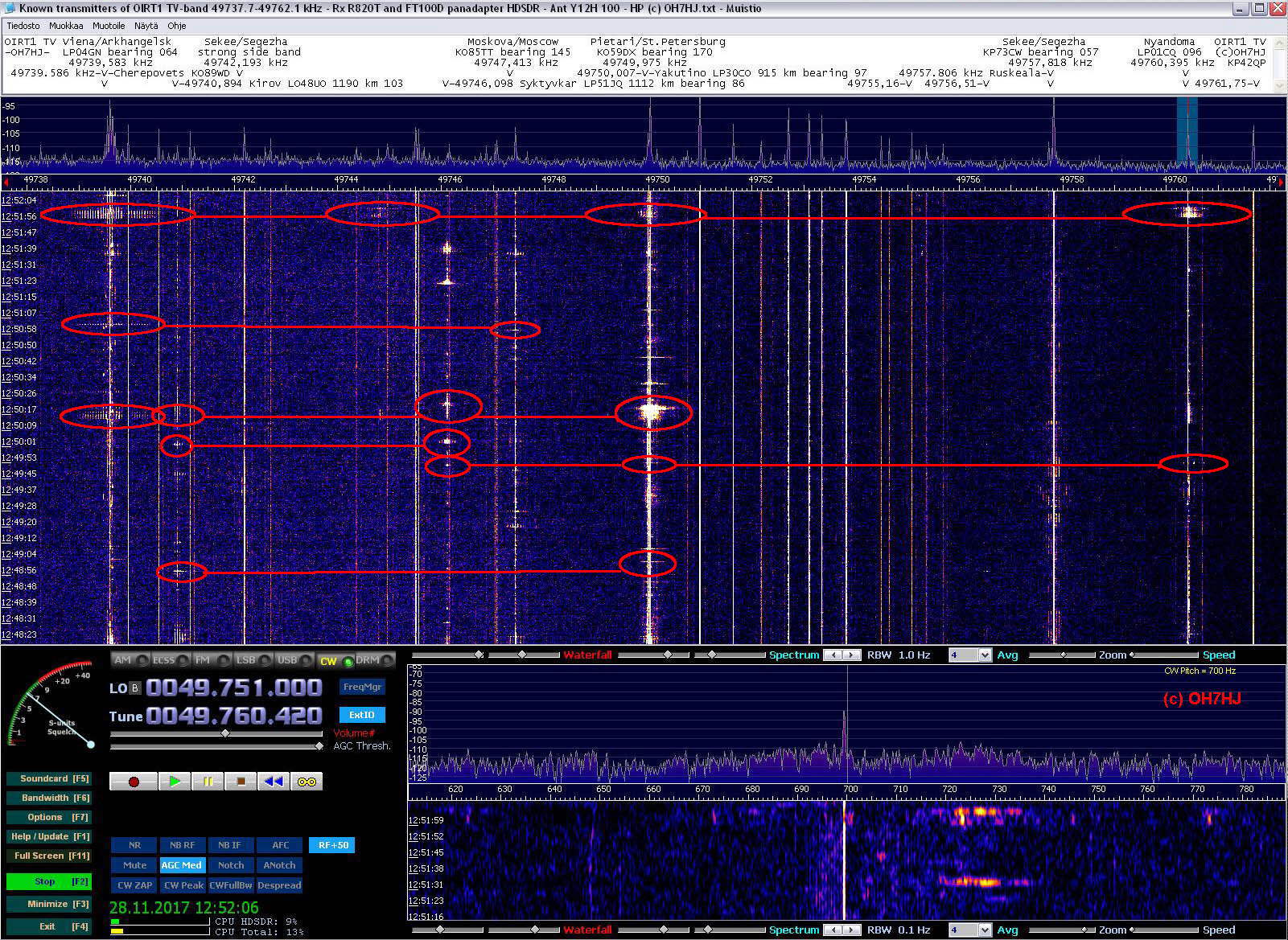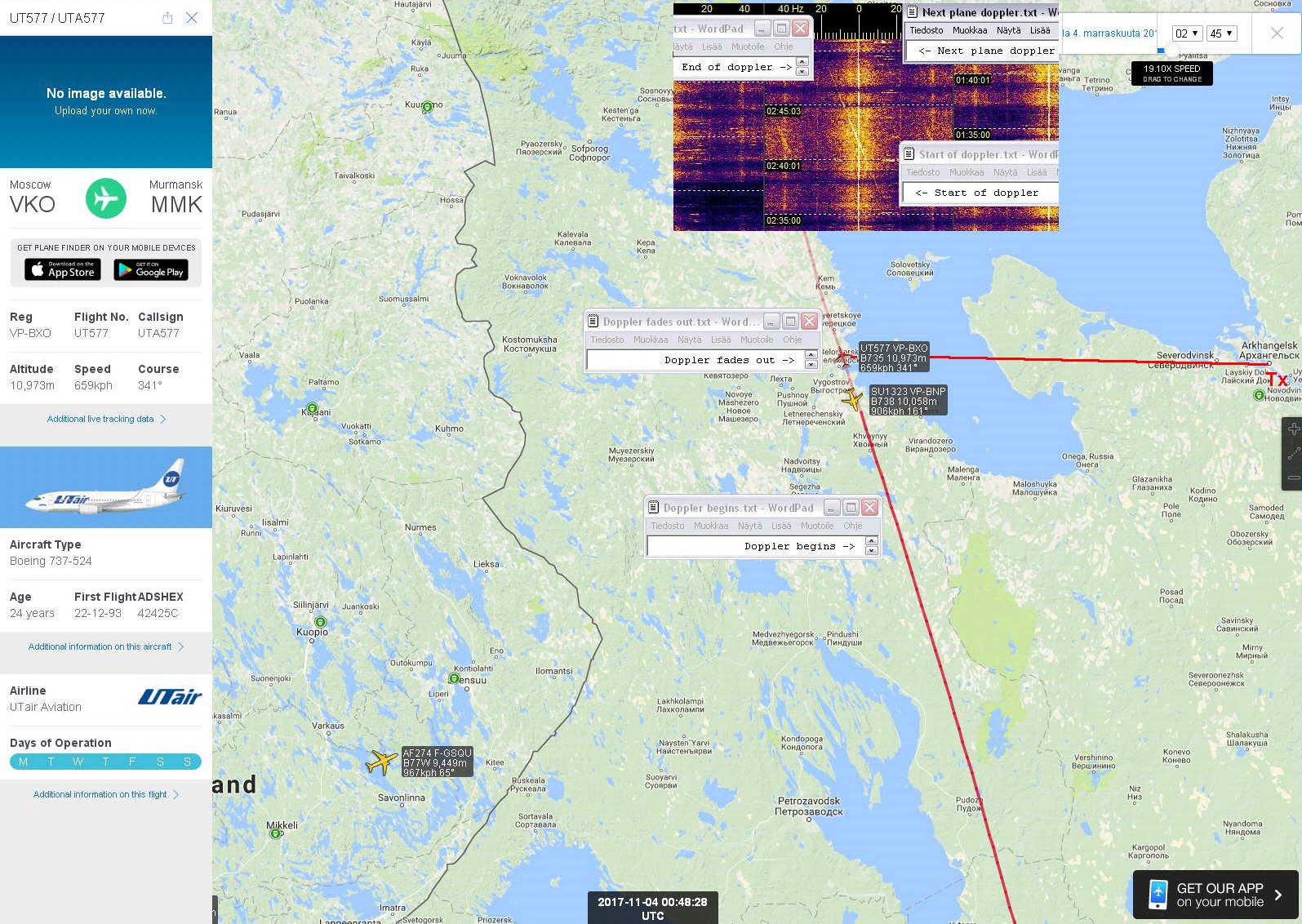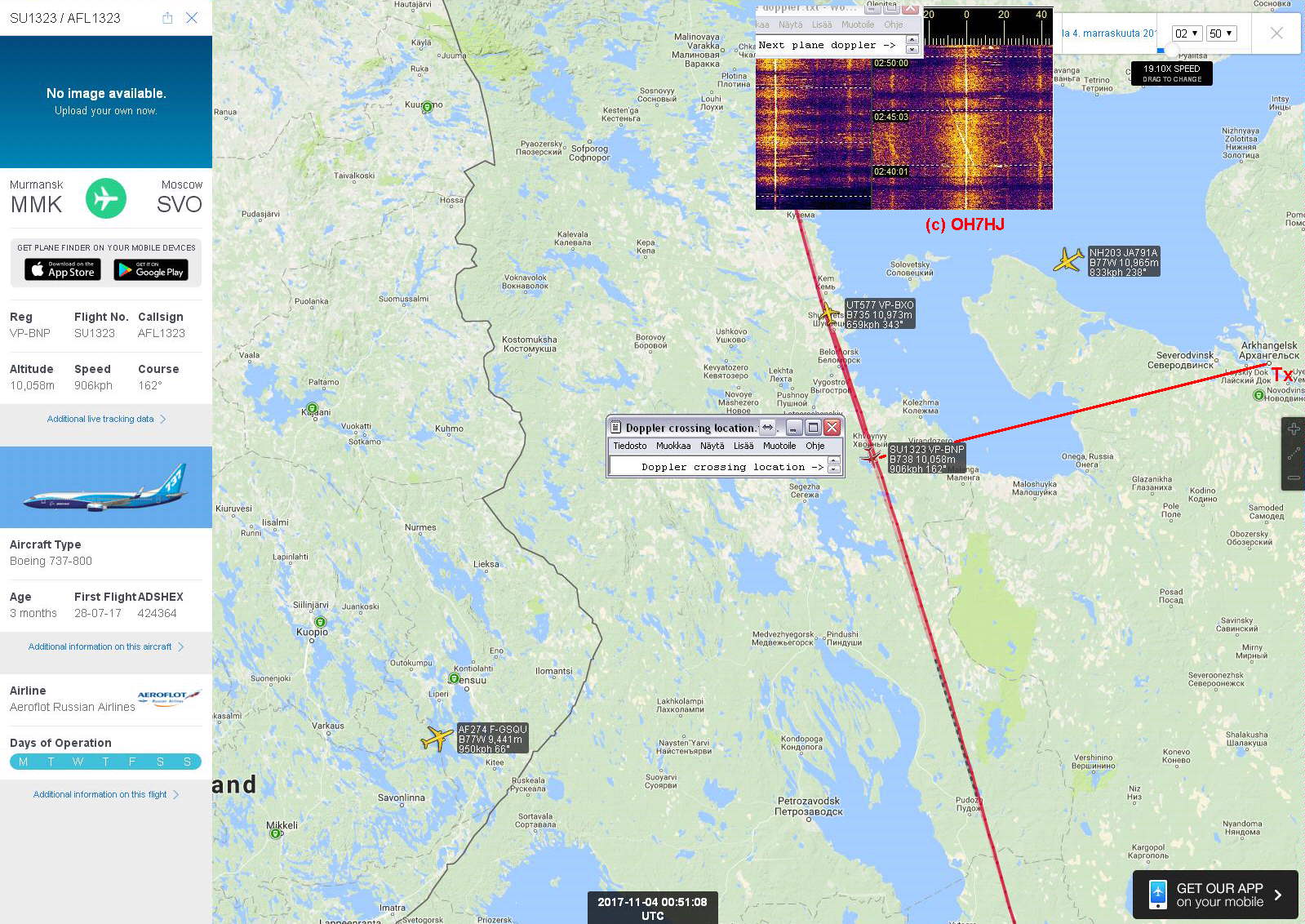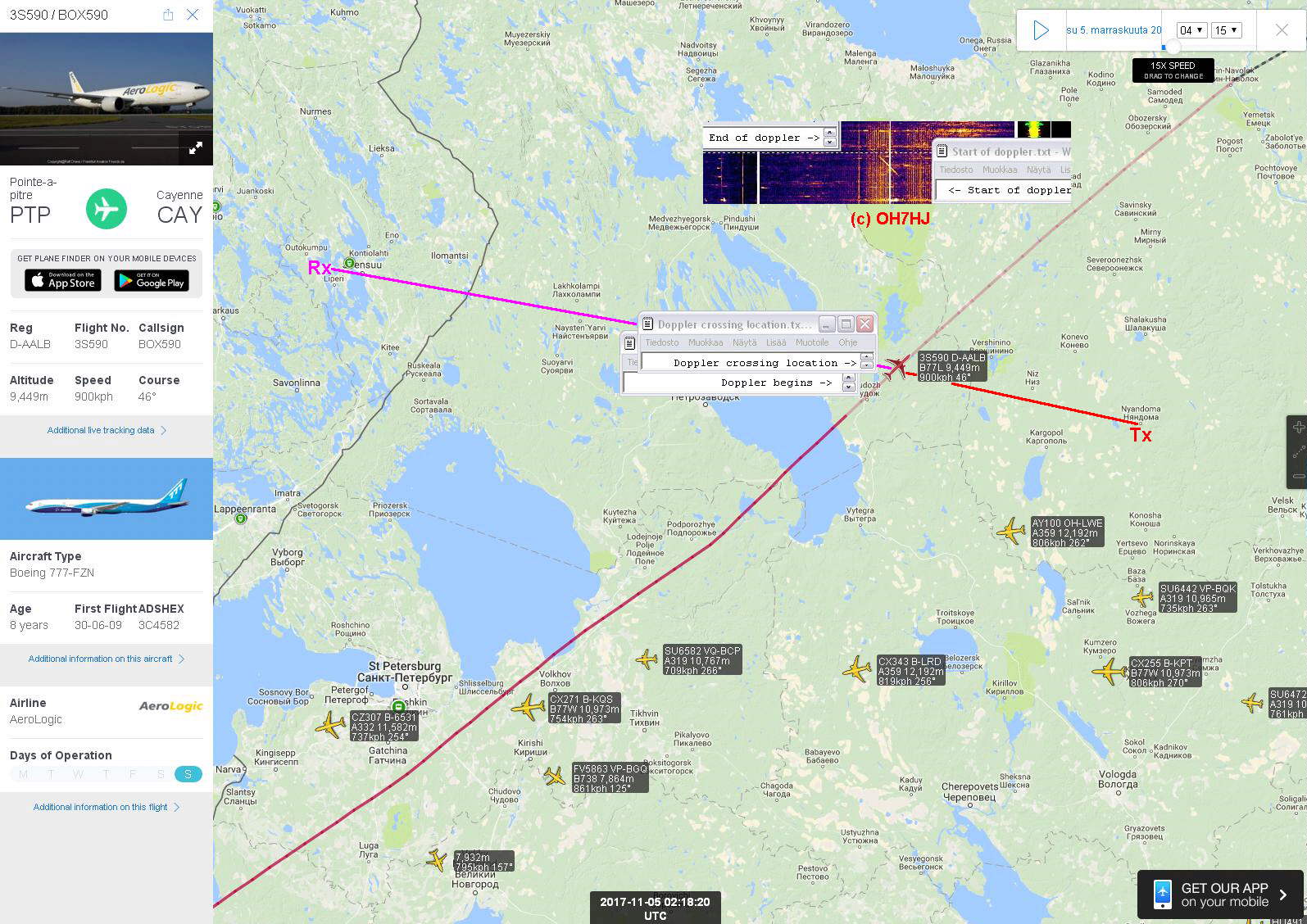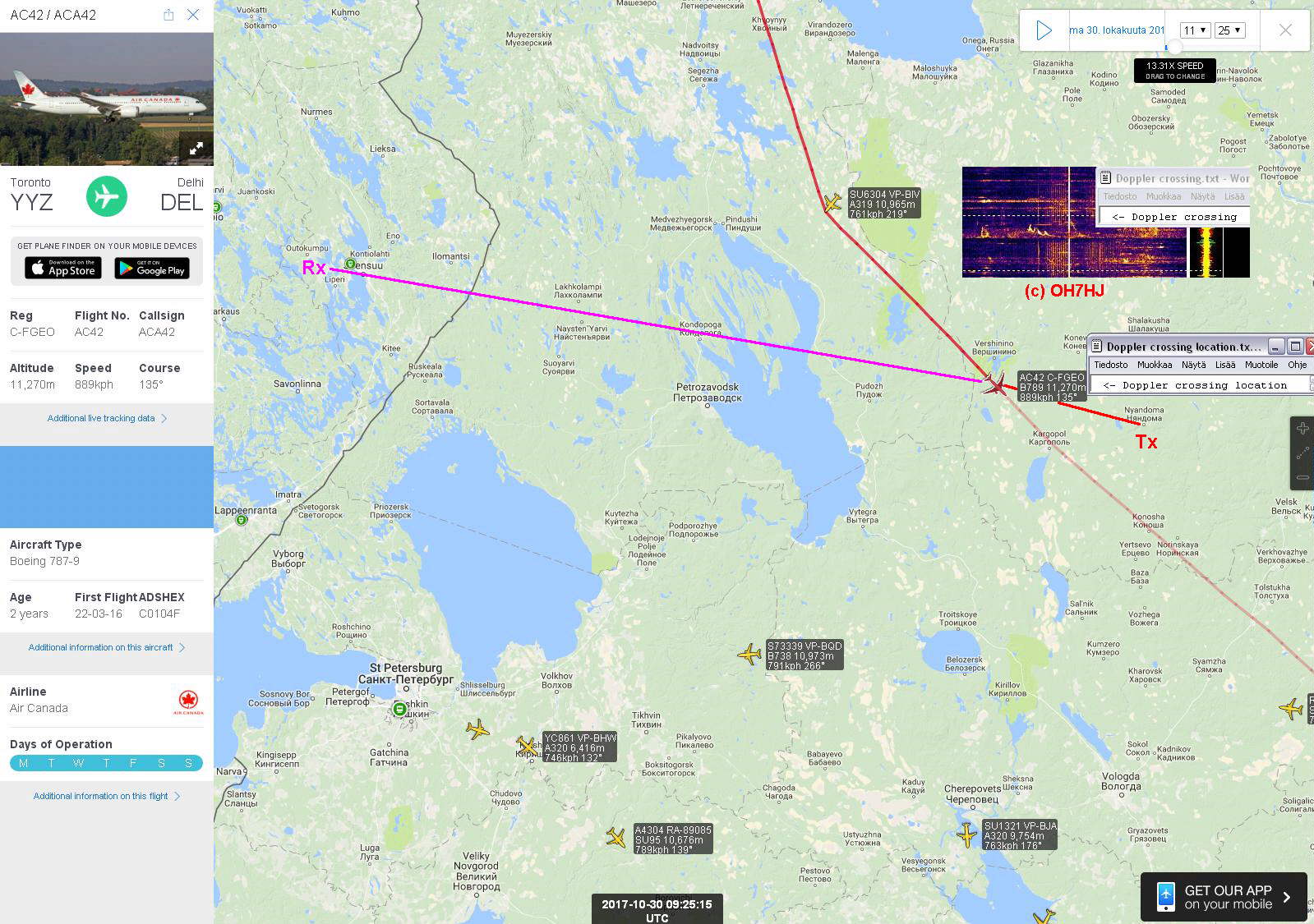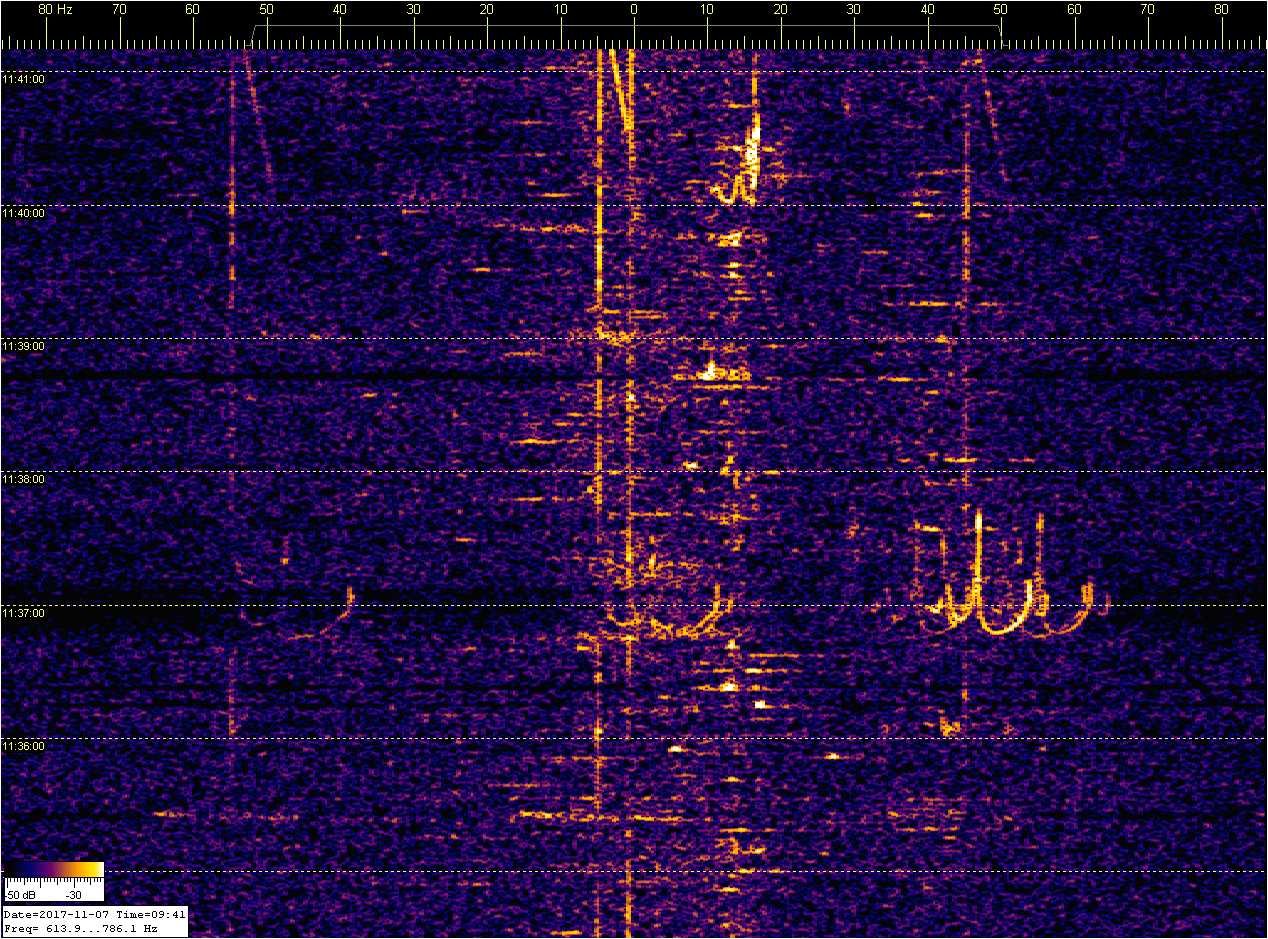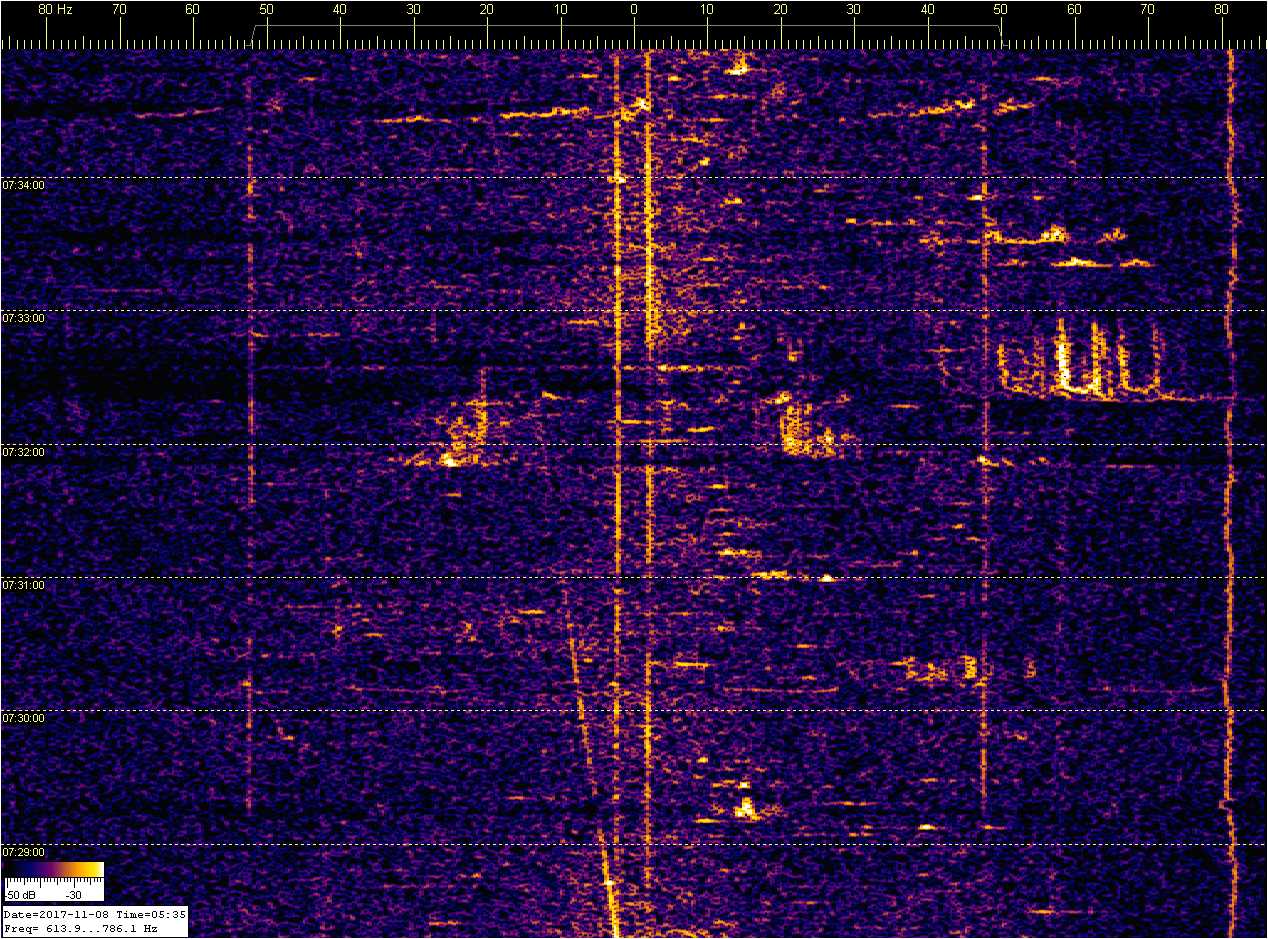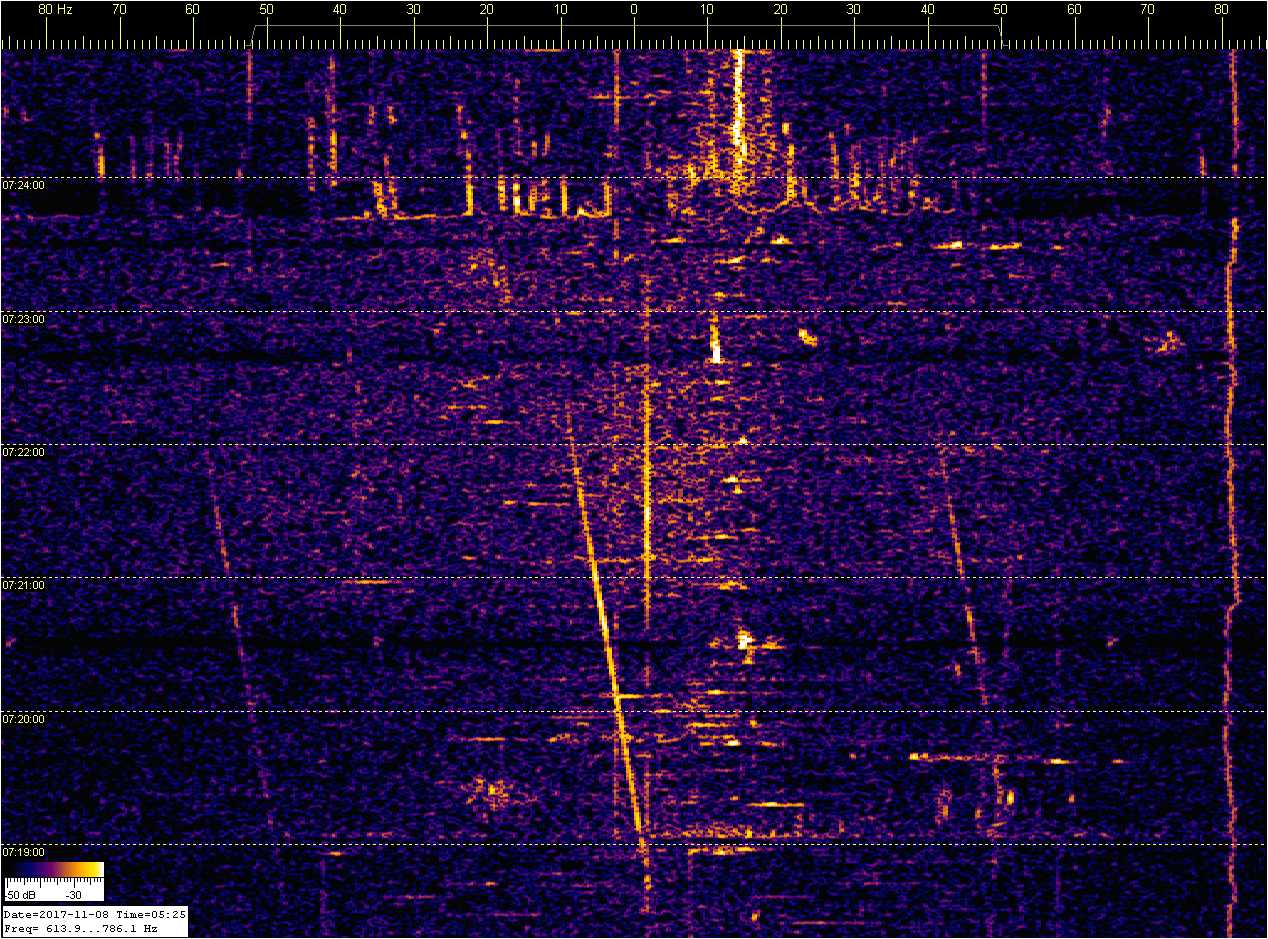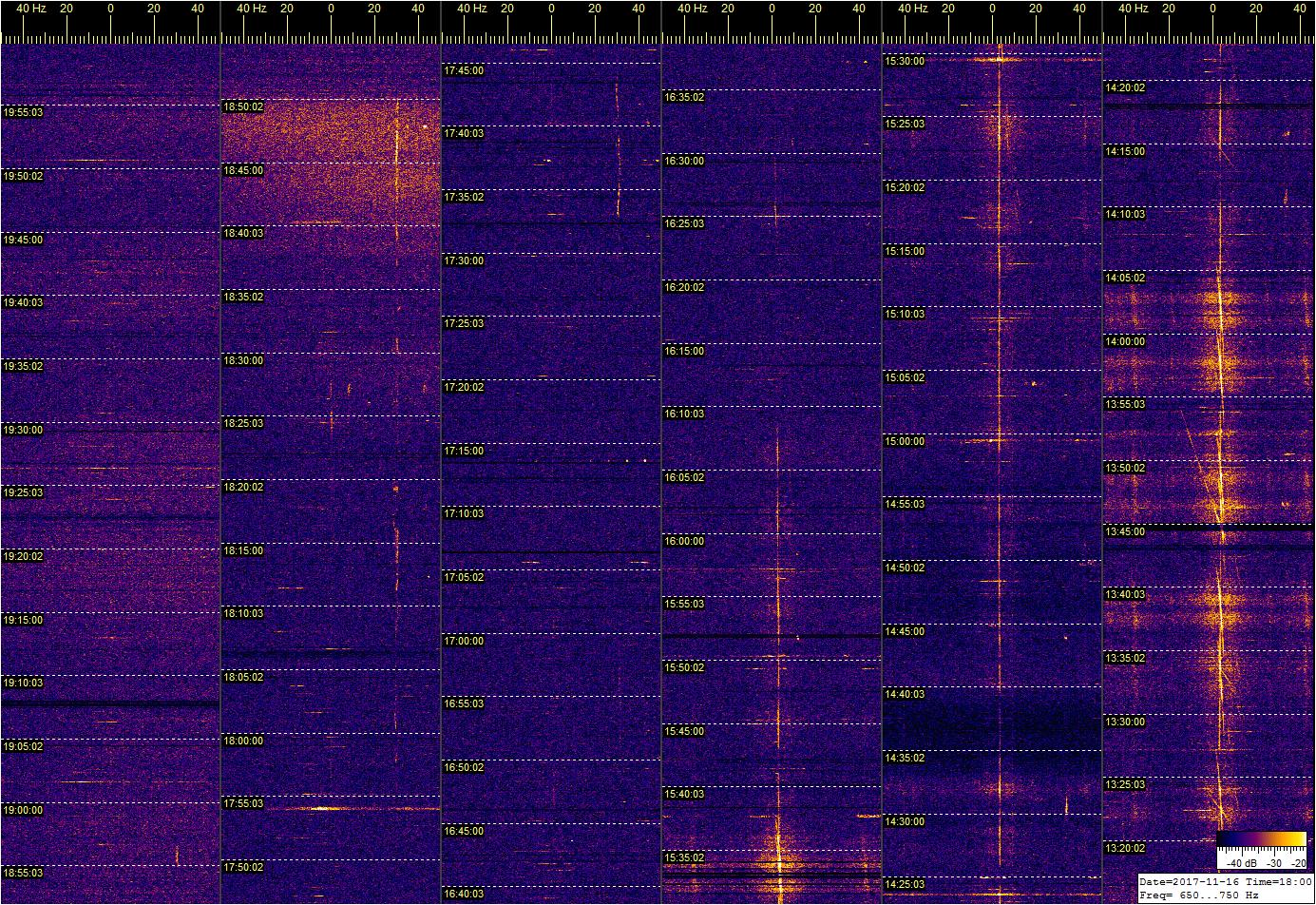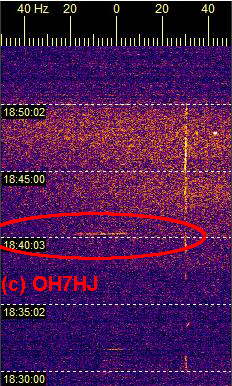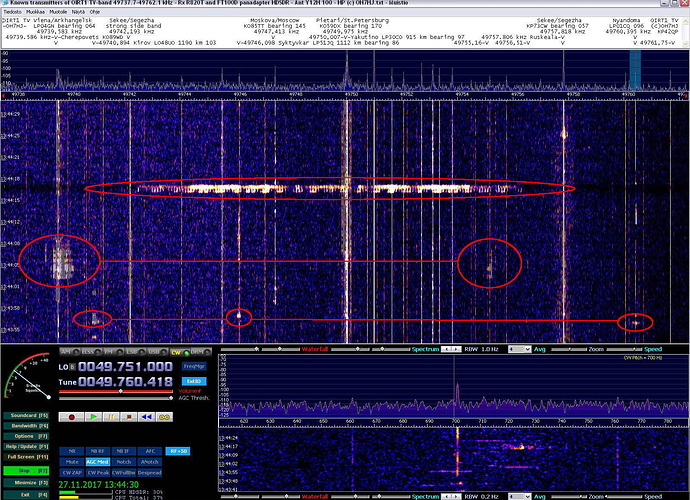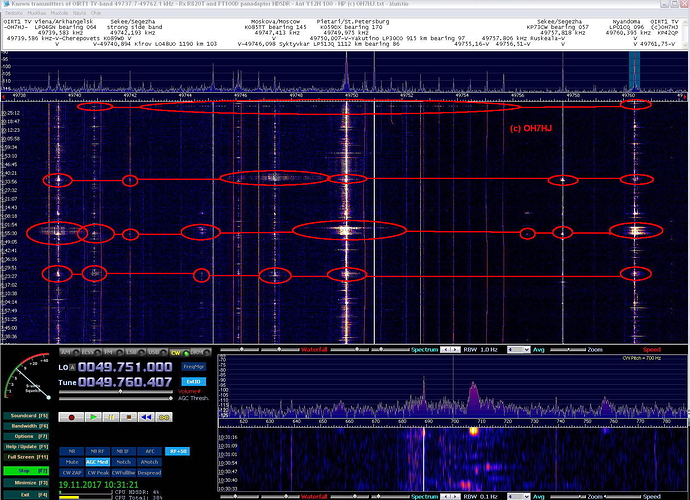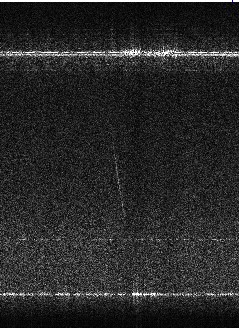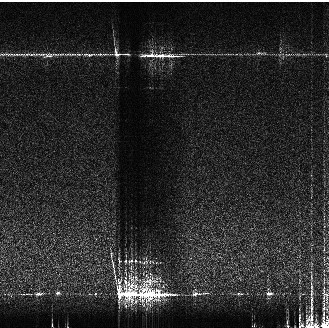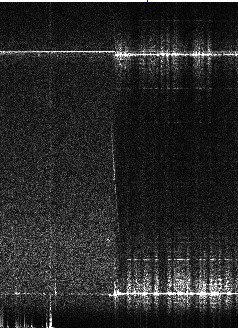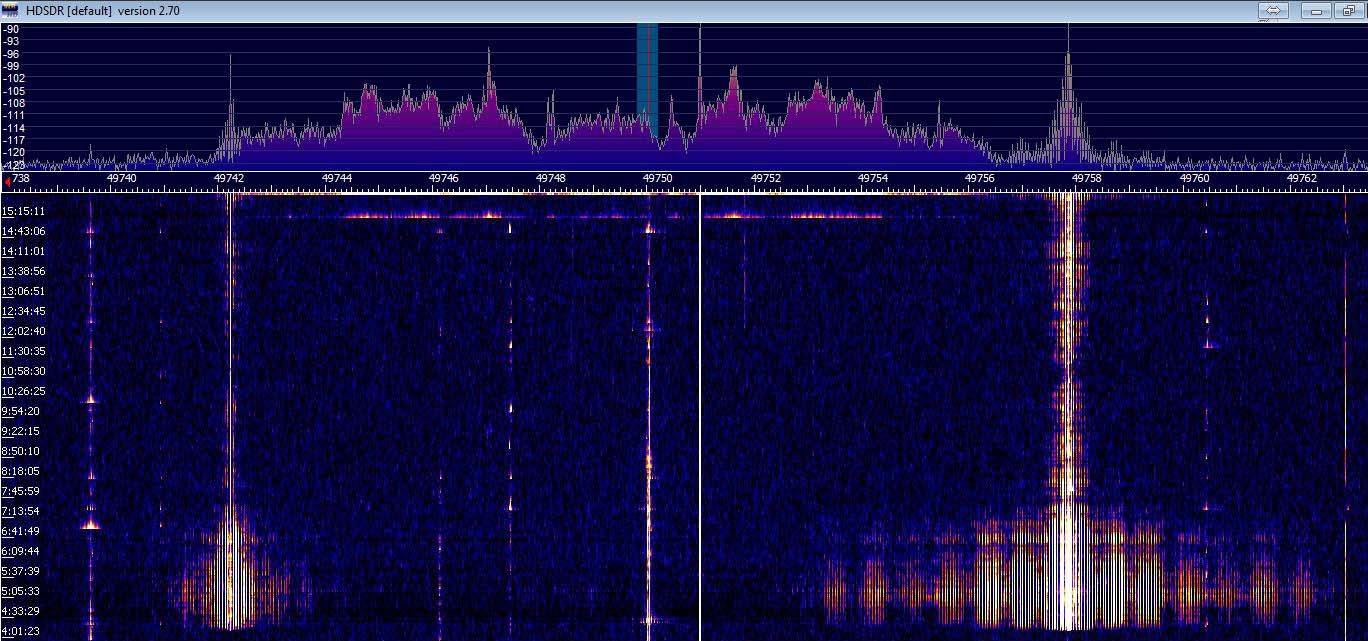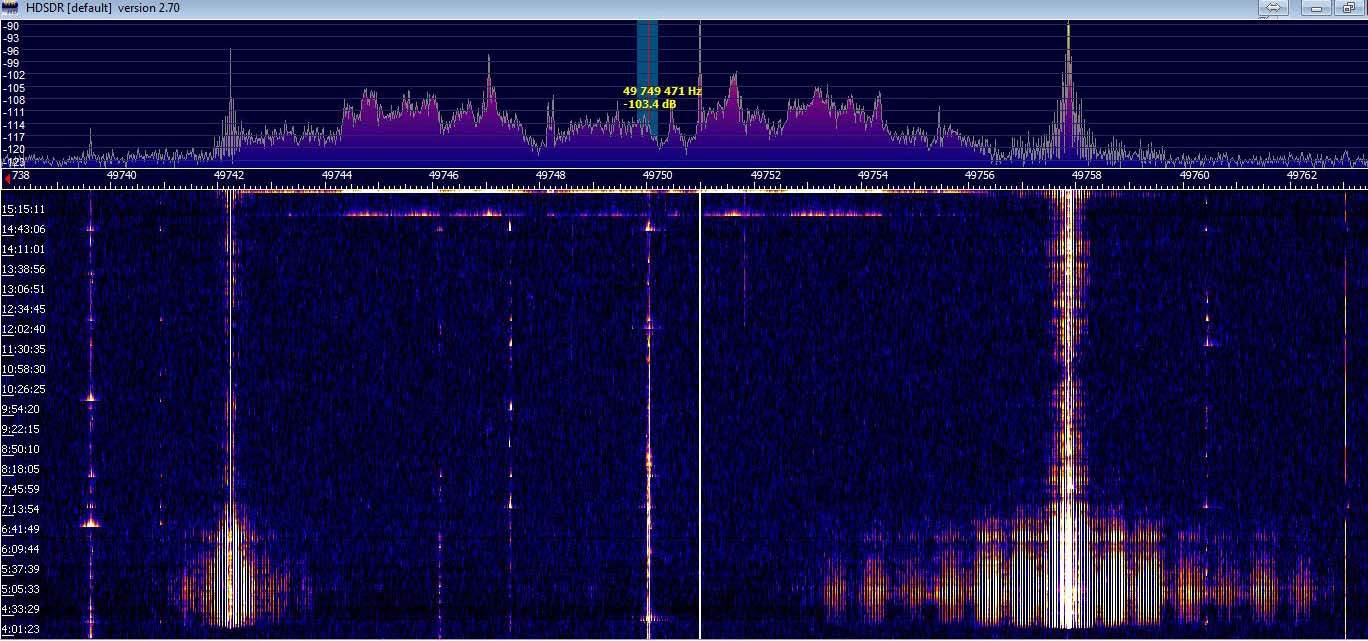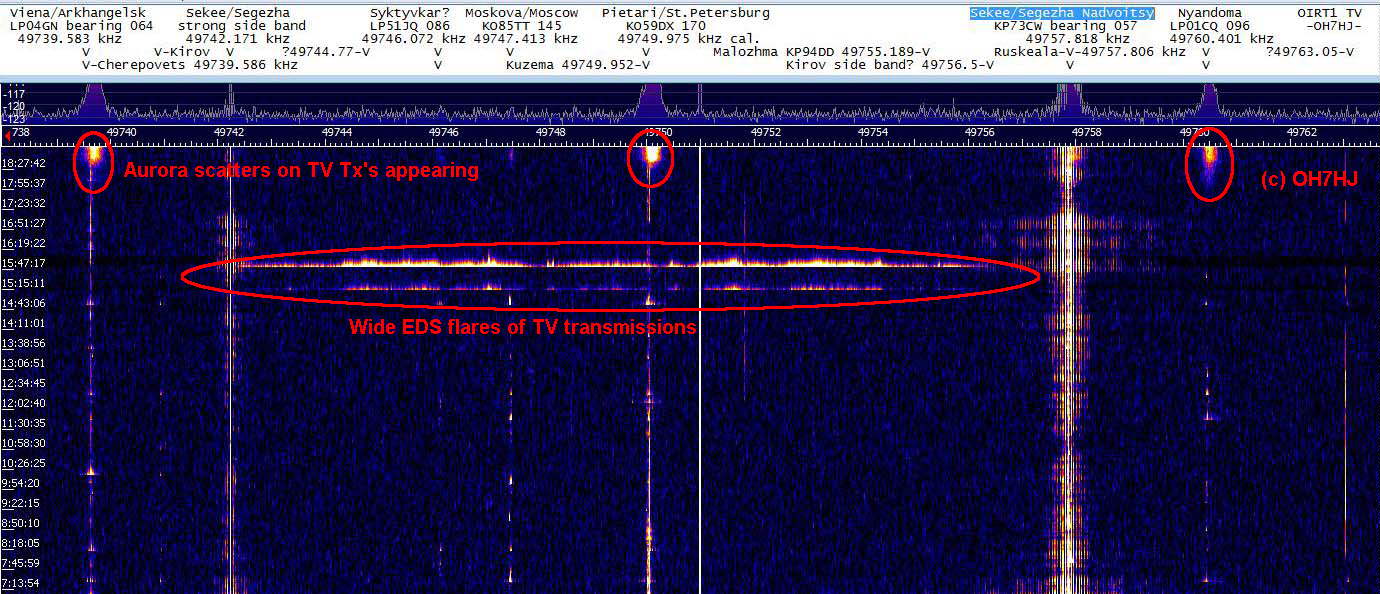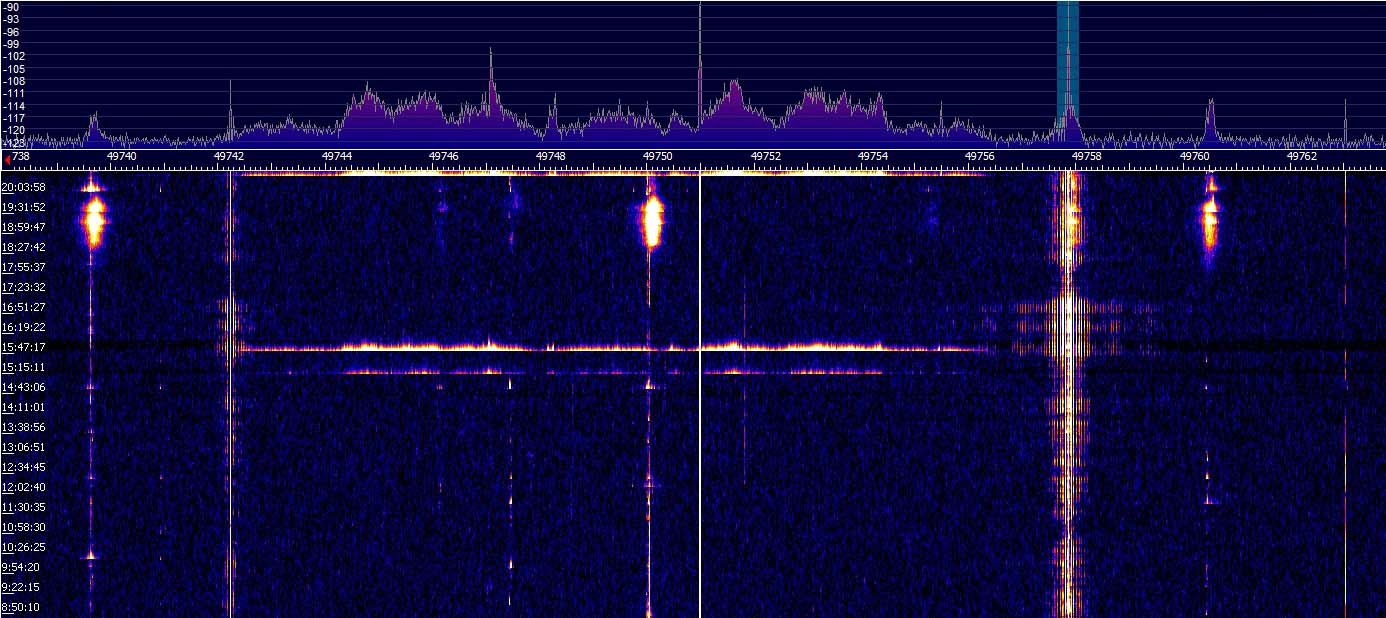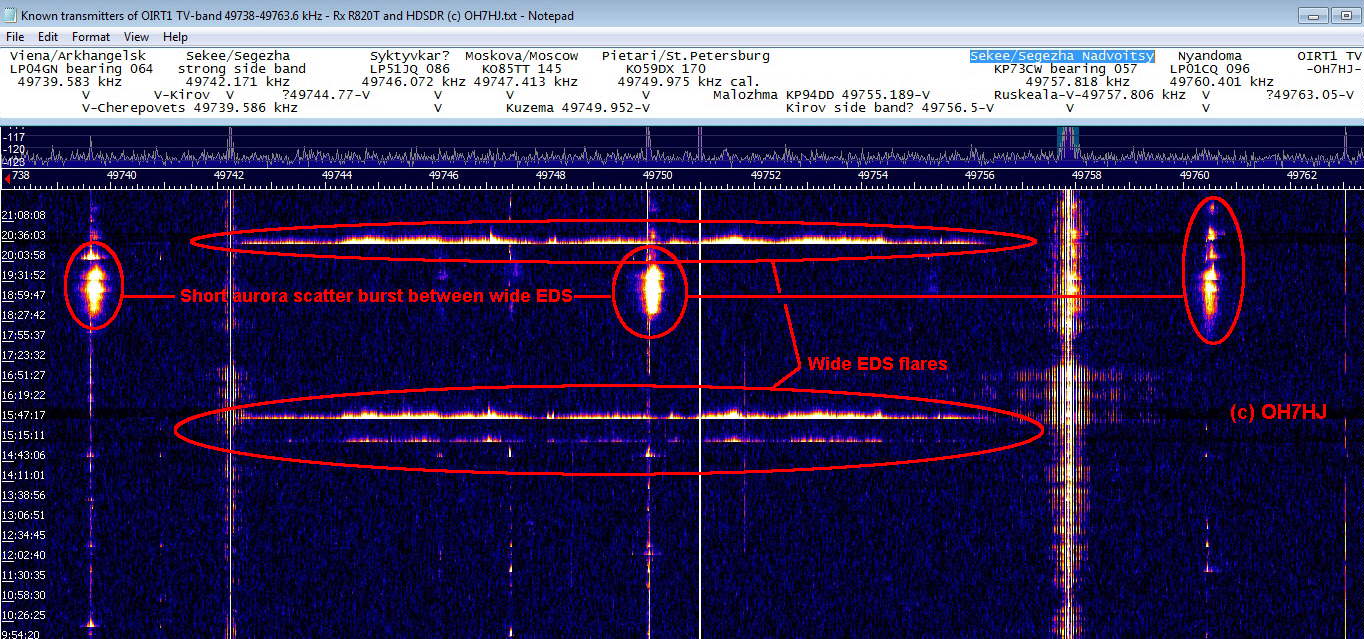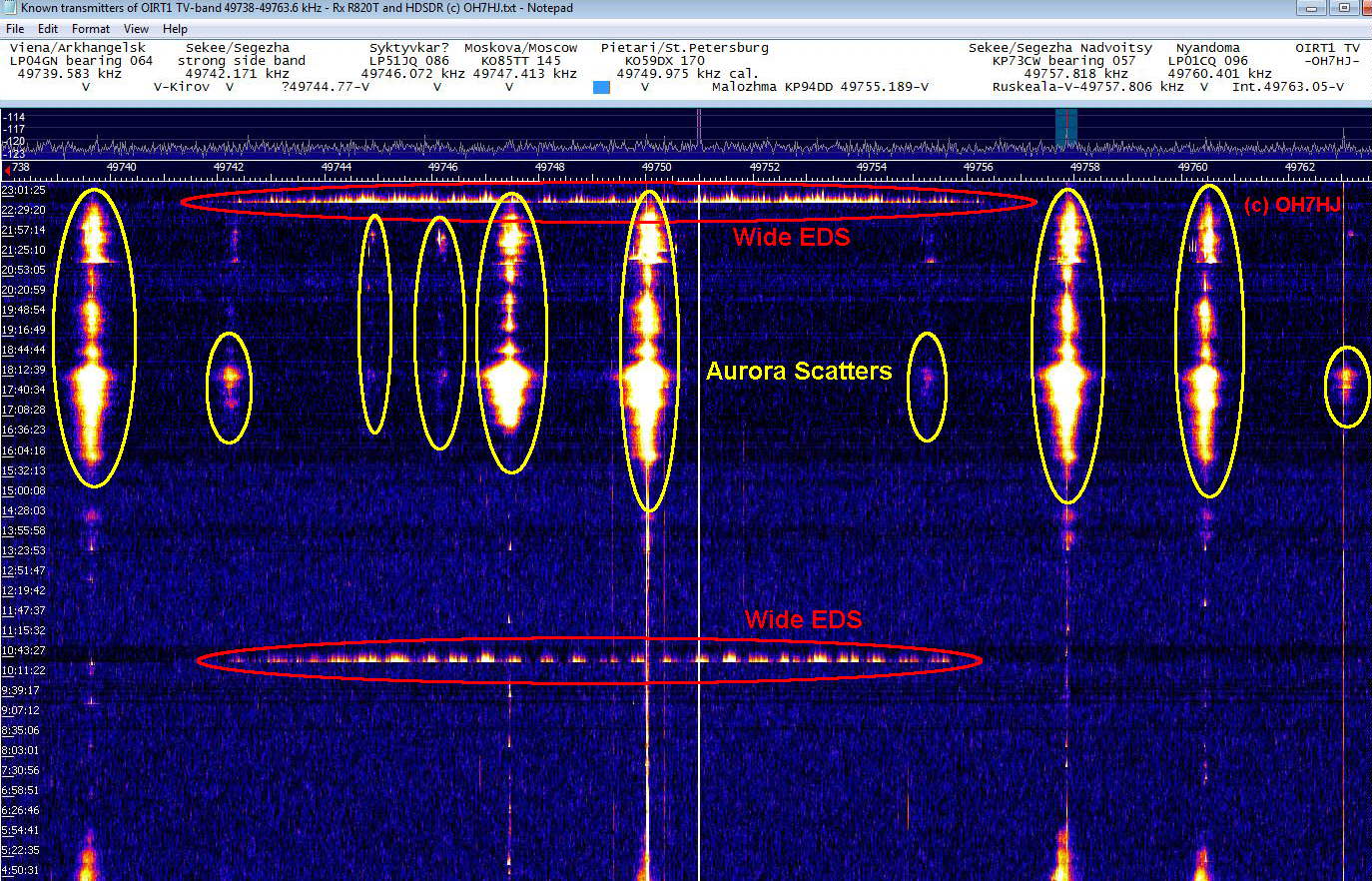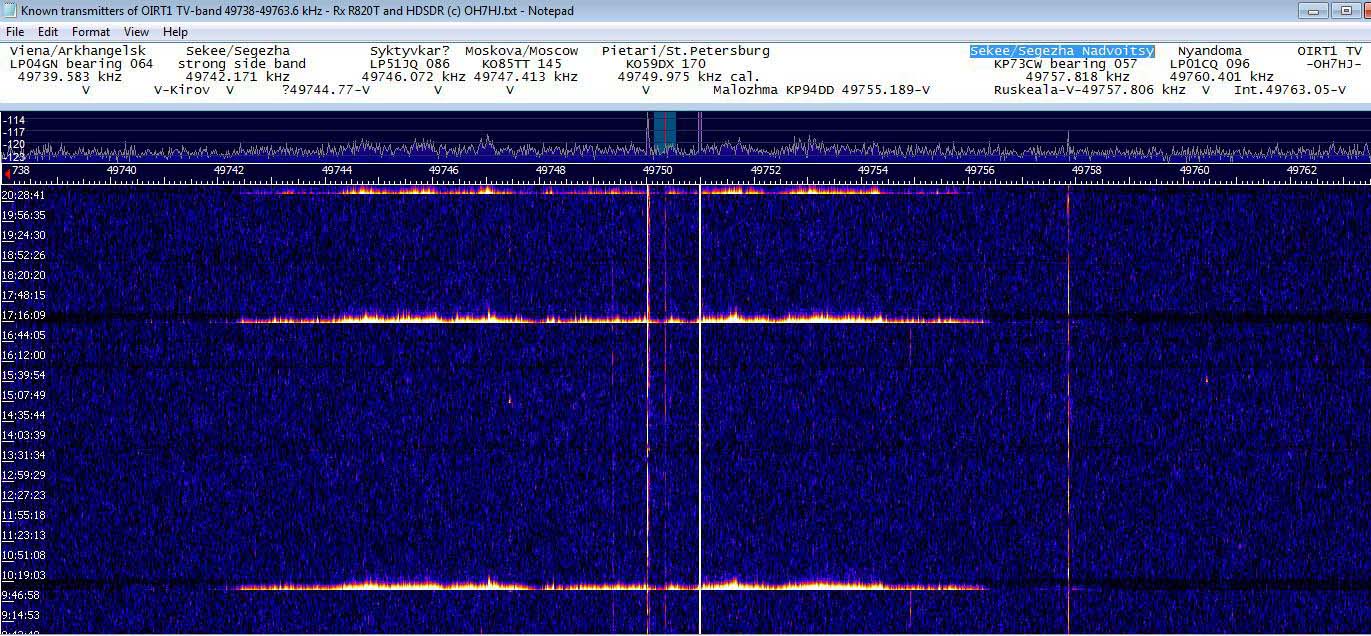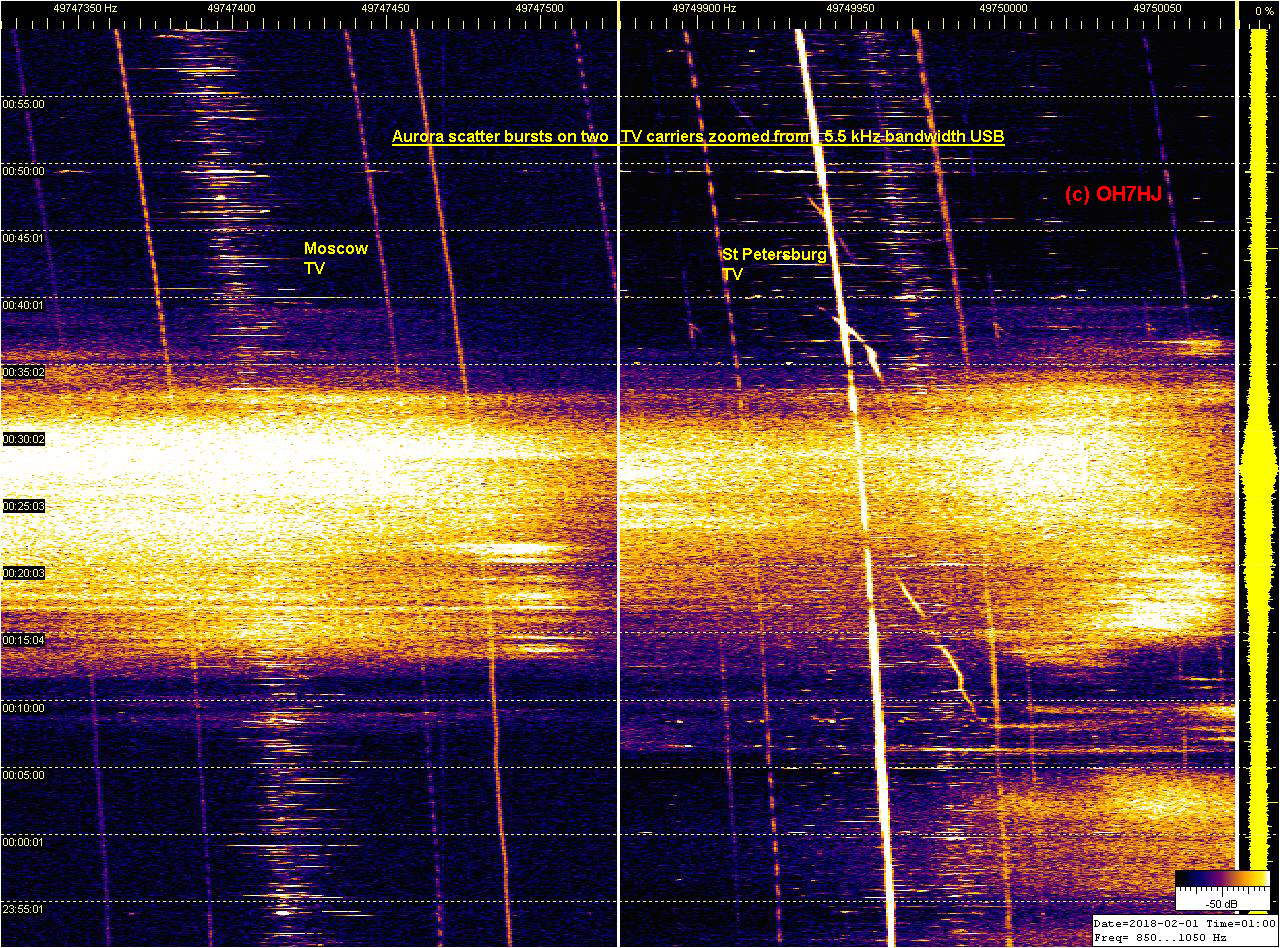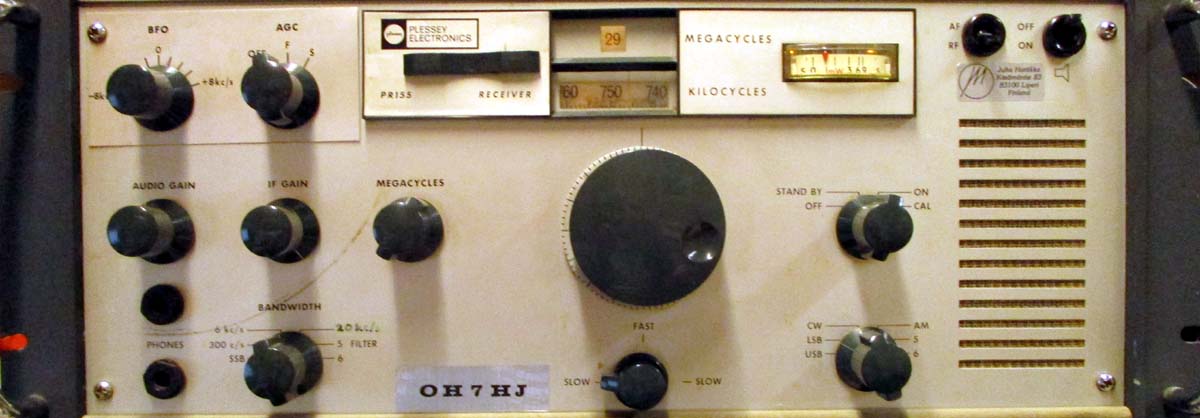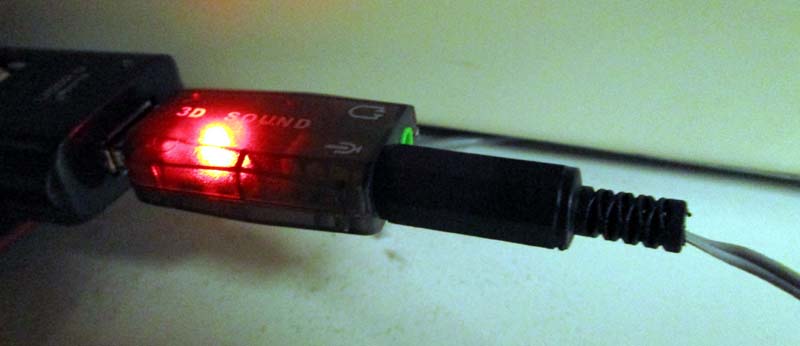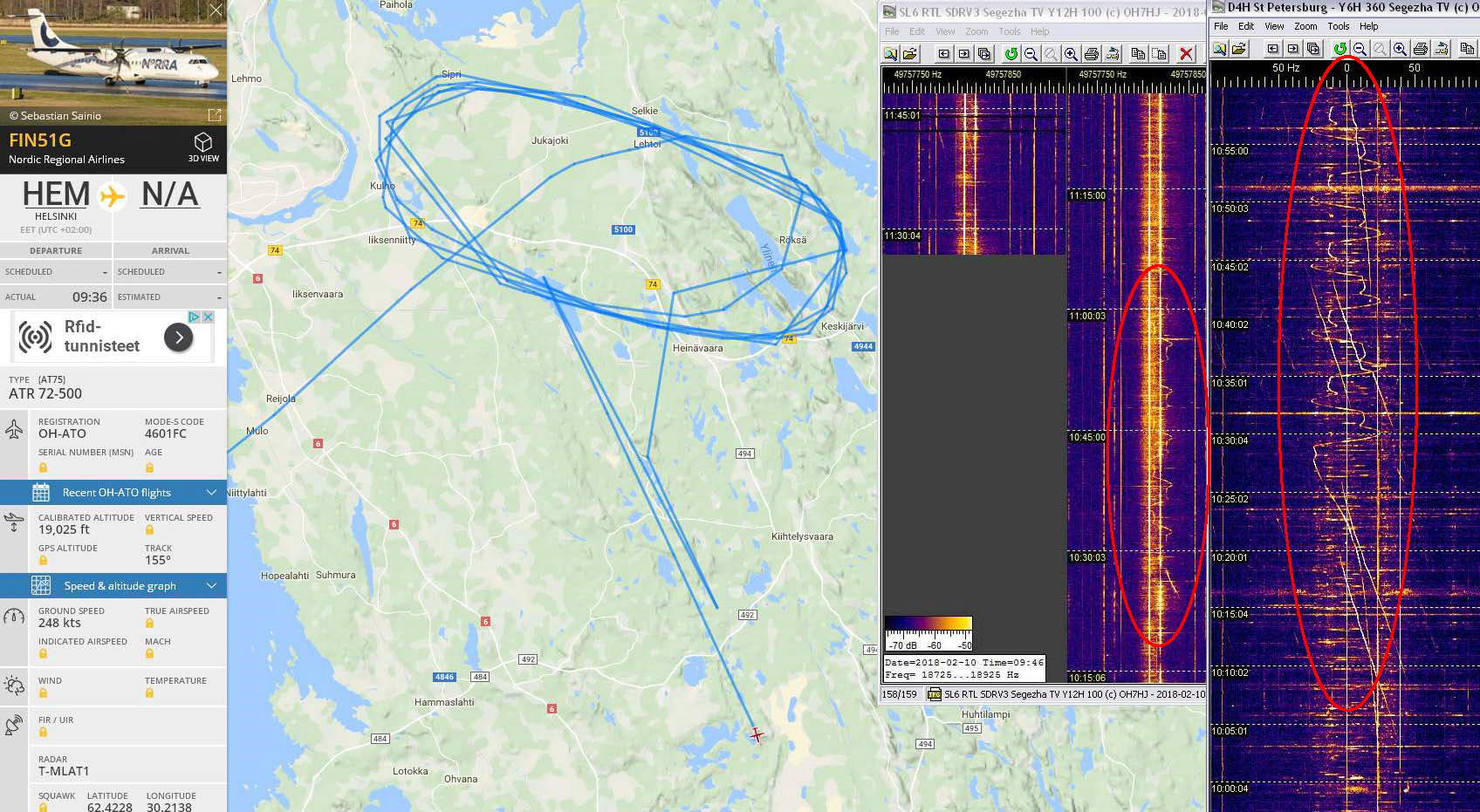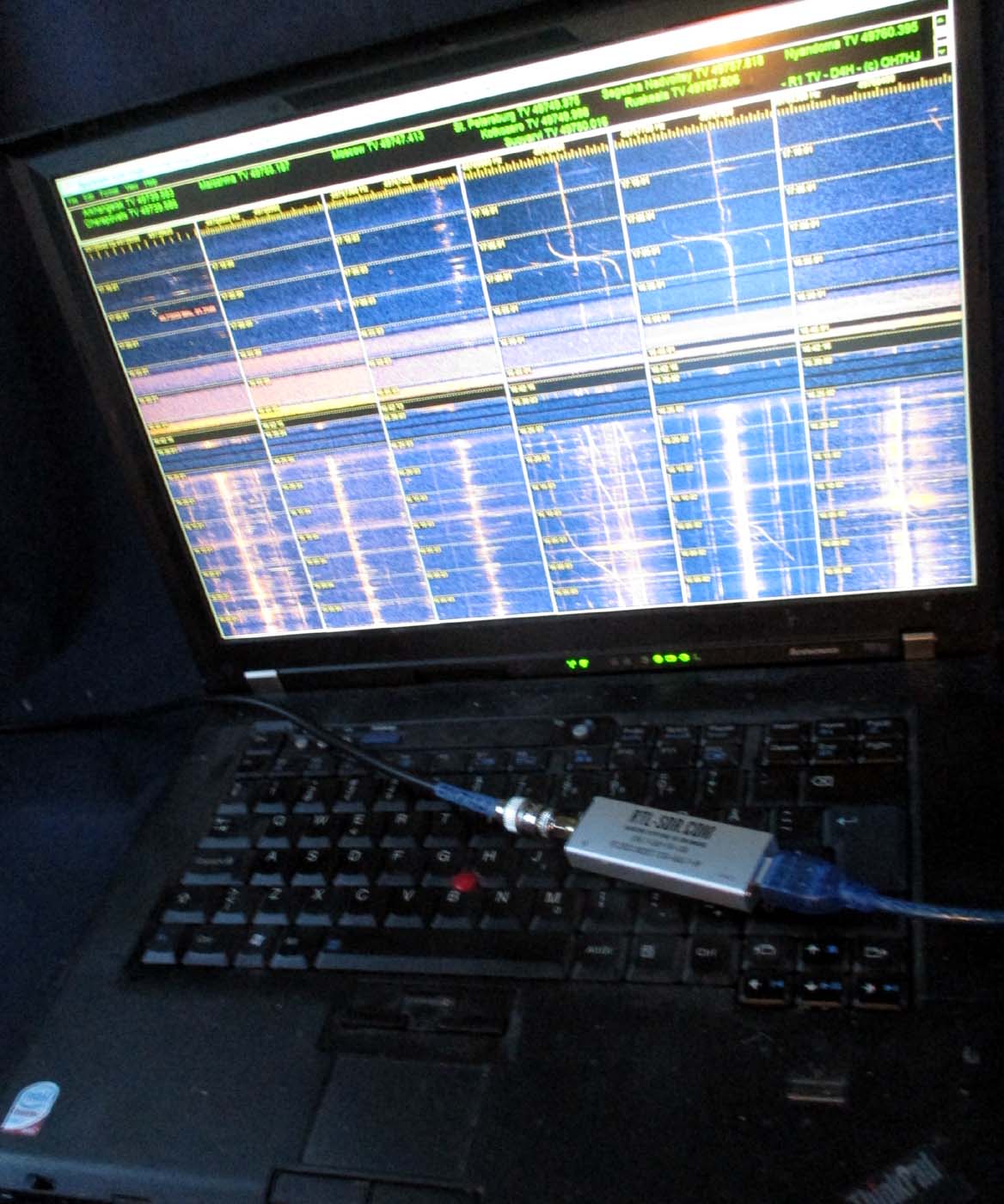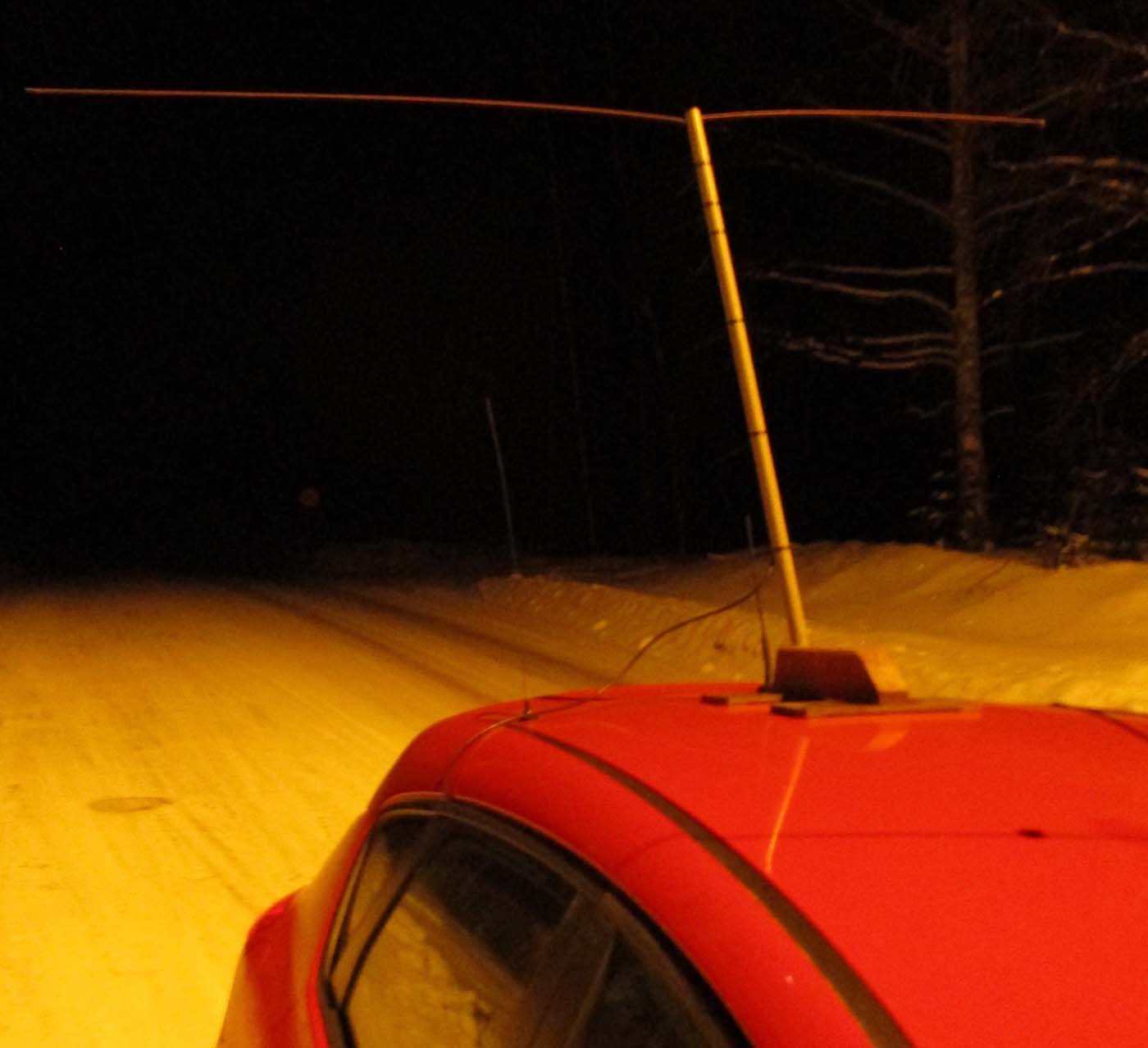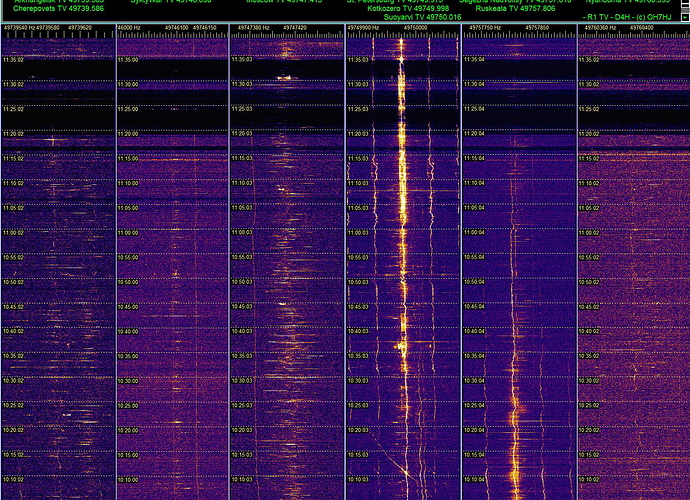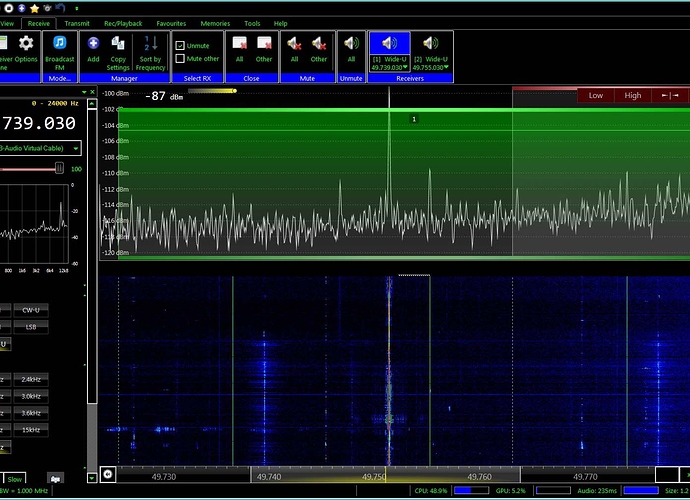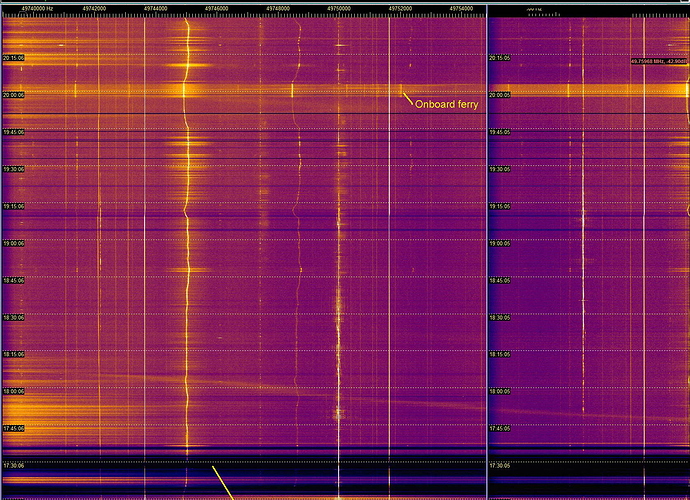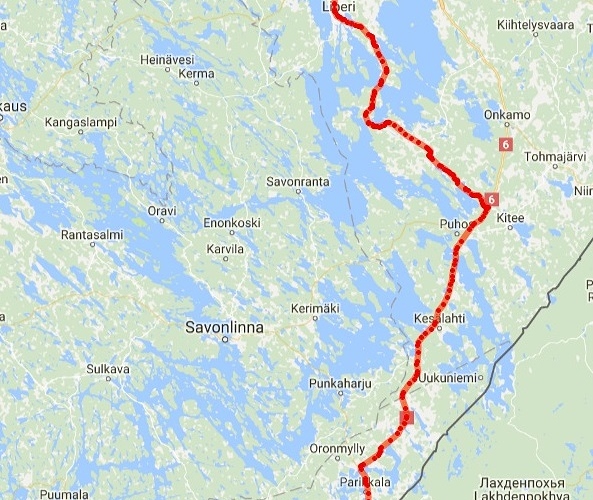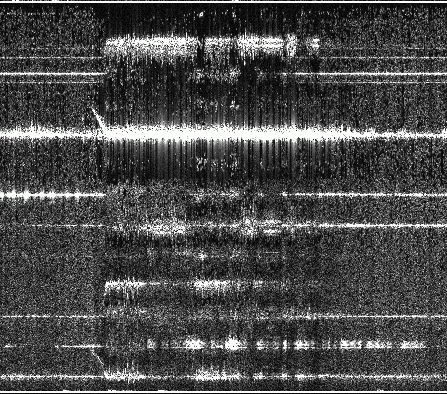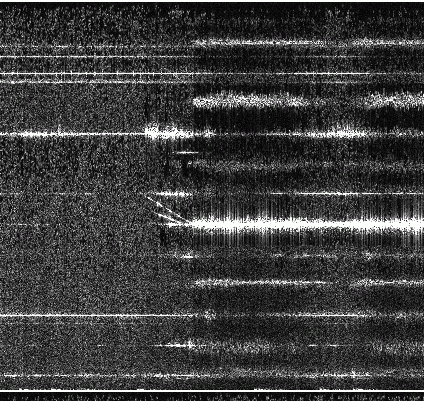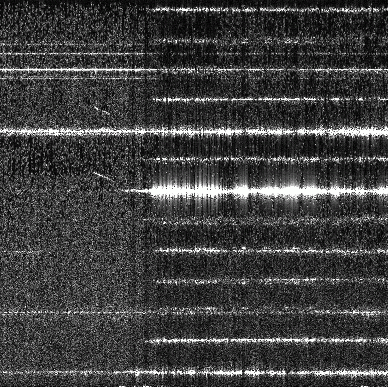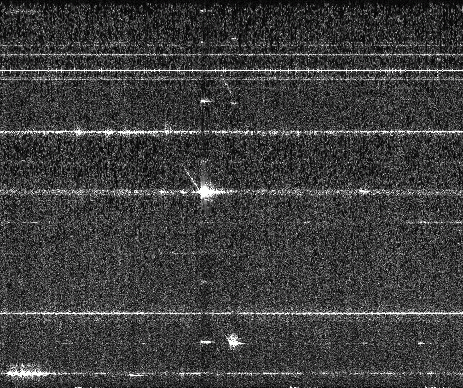Näihin HDSDR-softaradiolla havaittuihin tyypillisiin spektreihin 6m TV-bandin R1-kanavalta merkkasin ympyröiden ja viivoilla yhdistäen joitakin esimerkkejä samanaikaisista luonnollisista heijastuksista, jotka ovat yhtaikaisia eri TV-lähetinten jaksoilla. Samanaikaiset luonnolliset radioskatterit näkyvät useina erilaisina yhdistelminä eri TV-lähetinten taajuuksilla. Koska radioheijastukset ovat voimakkaimpia lähetinten suunnilla esiintyvistä korkean taivaan kohteista, näiden samanaikaisista yhdistelmistä voi arvioida korkean taivaan heijastusten aiheuttajien summittaista tapahtumissuuntaa TV-lähetinten suuntiin vertaamalla.
Esimerkkiskattereden alussa ei näy meteoriheijastusten tuntomerkkiä, meteorivanan nopean lineaarisen liikkeen head-echo-doppleria, joten ne lienevät tavanomaisia spontaanisti syttyneiden luonnollisten korkean taivaan sähkönpurkausten radioheijastuksia (Electric Discharge Scatter EDS). Tällaisia sähkönpurkausheijastuksia näkyy ala-VHF-bandeilla jokseenkin jatkuvasti, kun taas meteoridopplerit (MS) ovat varsin harvinaisia.
Pitkäaikainen seuraaja saattaisi havaita spontaanien luonnonskattereiden seasta satunnaisia nopeita meteoridopplereita, ja käyttää niiden voimakkuusvertailua meteorivanan tapahtumasuunnan arvioimiseen tunnettujen TV-lähetinten suuntien perusteella. Vielä tarkemmin heijastusten radiosuuntiminen onnistuu tietenkin interferometrialla, jos käytössä on koherentti tuplavastari ja -antenni.
Tunnistetut parhaiten näkyvät TV-lähettimet taajuuksineen, lokaattoreineen ja karttasuuntineen on merkitty spektrikuvan yläreunan asteikolle. Muita etäisiä TV-lähettimiä, joiden luonnollisia heijastuksia nauhoilla myös satunnaisesti näkyy, on toki paljon näitä merkittyjä enemmän. Taajuusasteikko yläspektrin ja vesiputouksen välissä on kilohertseinä (kHz). Aikaleimat vasemmassa reunassa ovat Suomen aikaa, ja päiväys sekä vastaanottosetuppi on merkitty kunkin otoksen tiedostonimeen.
Linkkejä
Oheiset esimerkkiotokset on kopitettu hamssivastarin välitaajuutta kuuntelevalla RTL-SDR-tikulla tällä itään katsovalla jagikaksikolla: viewtopic.php?f=21&t=599&start=30#p1853
Sekä luonnollisia radioheijastuksia, että lentsikkadopplereita voi käyttää myös kaksisuuntaiseen kusoiluun. Tässä yksi softa lentsikkaskatteriyhteyksien harrastajille: AirScout is a Software for Aircraft Scatter Prediction - airscout.eu/
Lentsikkaheijastusten käyttäminen tuntemattomien radiolähetinten suuntimiseen (Aircraft Scatter Direction Finding, ASDF) - Aircraft Scatter - Lentokoneheijastus ja sen doppleri.
Radiosuuntiminen kahden tai useamman antennin ja koherentin vastaanottimen interferometrialla: Simple Interferometer for Radio Direction Finding (RDF) - itr-datanet.com/~pe1itr/sate … ometer.htm
[b]In English:
How to tell the approximate direction of a natural high sky radio scatter? Here is how I estimate the general direction of strong 6m TV band scatters with single aerial and receiver method of known TV transmitters used as radio scatter beacons. [/b]
It is known that the baseline forward scatter effect greatly increases scatter intensity when the scattering target is close to the Rx - Tx baseline. This applies both for natural and artificial radio scatter targets. When scattering target is farther away from Rx - Tx baseline the signal strength of scatter decreases.
With very powerful TV Tx’s as beacons, radio scatters are visible from far away from baseline high sky targets as off-baseline backscatters. With small power TV Tx’s as beacons, only targets close to Rx - Tx baseline create observable scatters because the baseline forward scatter effect boosts their signal intensity.
Direction Estimate of Radio Scatters by TV Tx’s
On the R1 (OIRT1) TV carrier freq of 49750 kHz there are many TV Tx’s a few kHz apart from each other. Looking at the attached R1 TV channel spectrum strips, one can see that some natural scatters appear simultaneously on some of the known TV Tx carrier freqs marked at the scale above the screenshots.
By the directions marked to the TV Tx’s on the scale, one can make a rough estimate about the general direction of each scatter by which Tx freqs they appear on simultaneously.
I have marked and joined with lines some examples of the simultaneous natural high sky electric scatters on the spectrums. There are lots of natural scatter occurring every few seconds on this R1 TV channel so it is rather easy to spot them with modest equipment.
High sky electric discharge scatters seem occur at about similar altitude as Es scatter and be related to them, so their visibility range is comparable to 50 MHz Es ranges. So, Central Europe is not away from R1 TV electroscatter observing range. 
73, T: - Juha -
